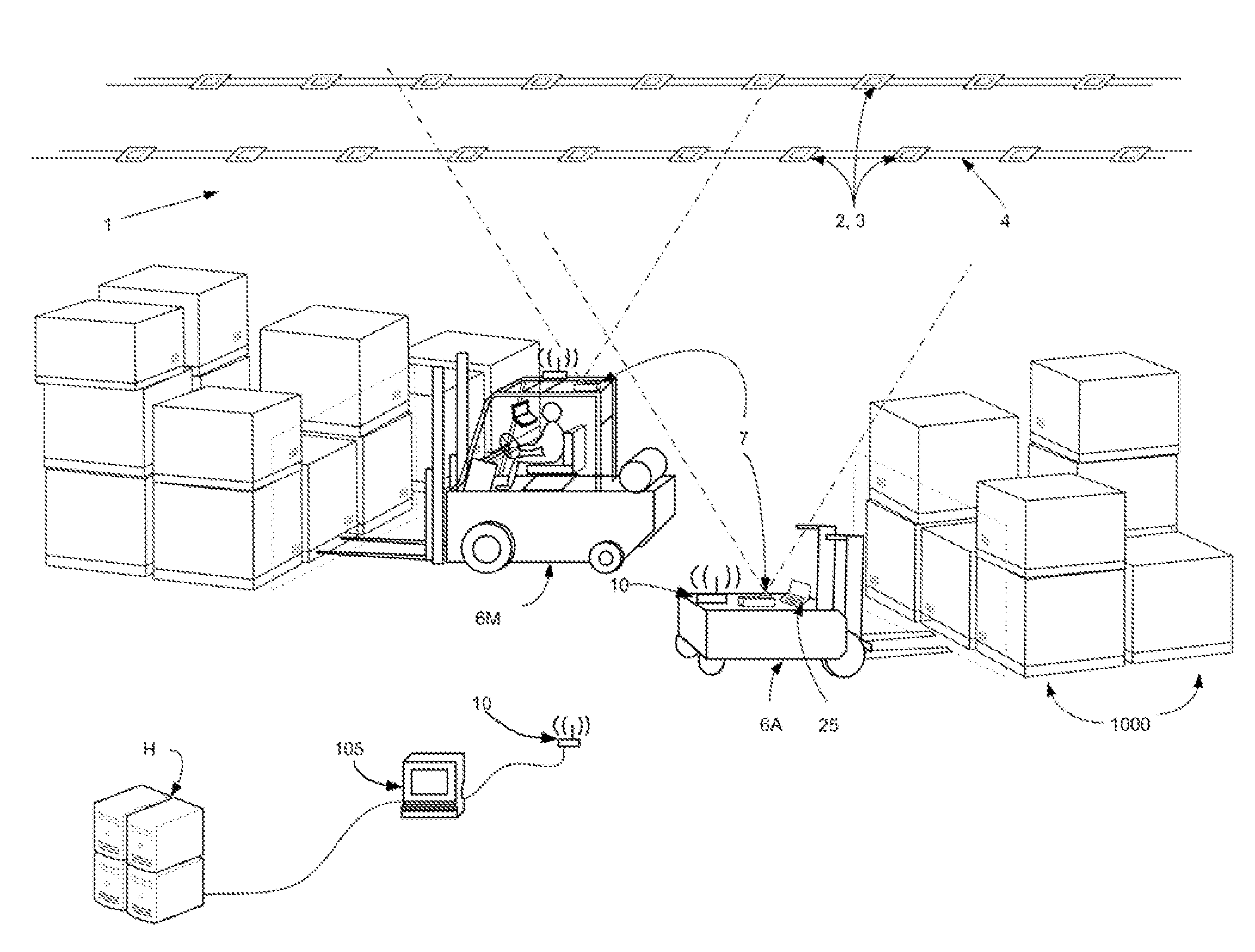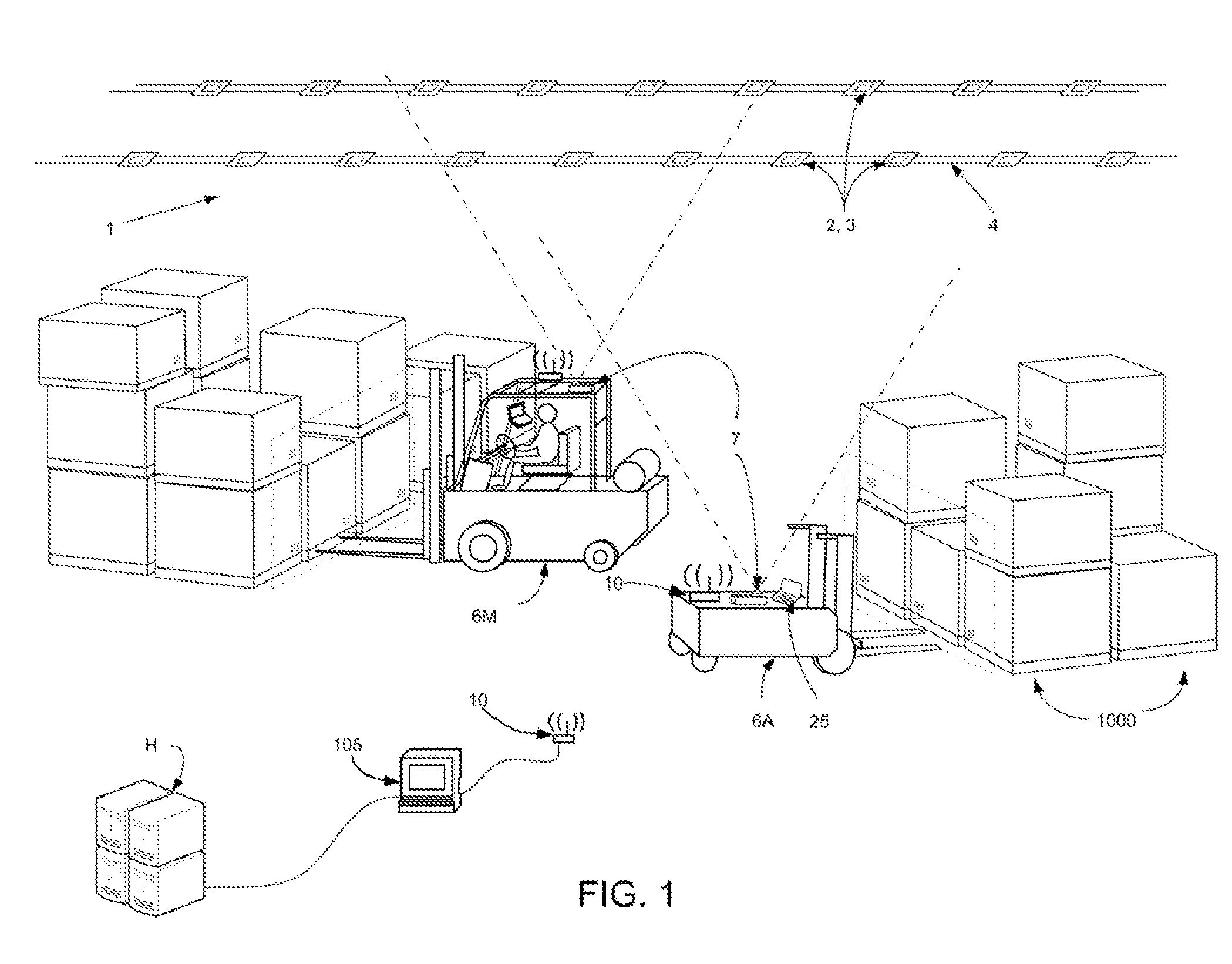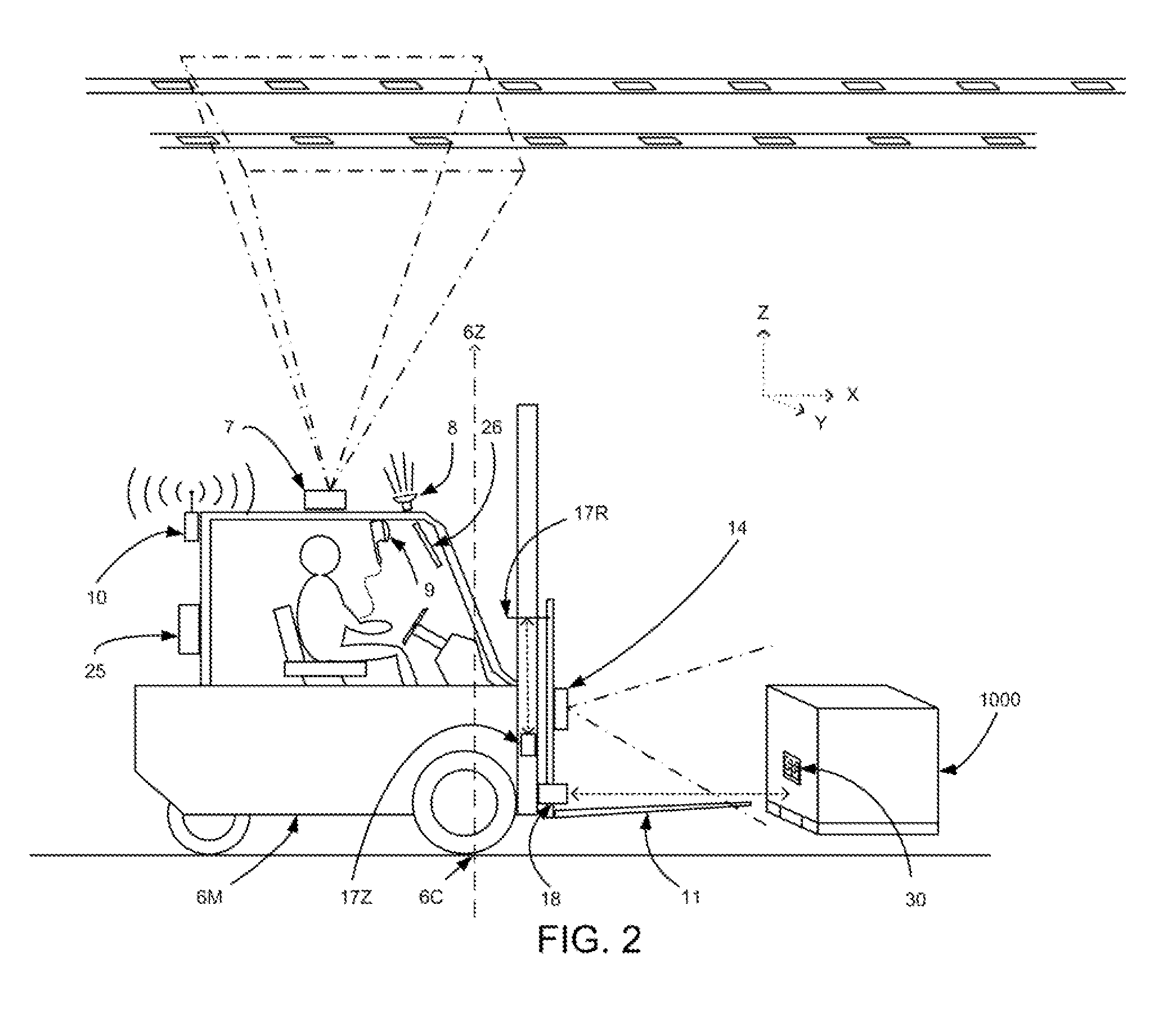Inferential load tracking
a load tracking and inferential technology, applied in the direction of vehicle position/course/altitude control, process and machine control, instruments, etc., can solve the problems of reducing driver and vehicle productivity, unsatisfactory solutions, and difficulty in determining asset or unit load location, so as to improve operational efficiency
- Summary
- Abstract
- Description
- Claims
- Application Information
AI Technical Summary
Benefits of technology
Problems solved by technology
Method used
Image
Examples
example
[0205]FIGS. 29 and 30 show examples of the Label Map and Load Map for the Example illustrated in FIGS. 31 and 32. FIGS. 31 and 32 illustrate a map of a warehouse during the transfer of a load from a first storage location to a second storage location using two conveying vehicles 106, 107. Two manned vehicles 106 and 107 are shown. A plurality of obstructions B1 through B11 (which may be storage racks or building structure) and an office area B12 are shown.
[0206]Preparatory to commencing warehouse operations a map of the coordinate space (i.e., the warehouse) is created to determine allowable travel routes for vehicles, locations of obstacles within the coordinate space, and practical names for storage locations. The map of the coordinate space is stored within the memory in the controller (computer 105 in the office area). One suitable way for creation of the map of the coordinate space is described in U.S. patent application Ser. No. 12 / 807,325.
[0207]In this example the system has ...
PUM
 Login to View More
Login to View More Abstract
Description
Claims
Application Information
 Login to View More
Login to View More - R&D
- Intellectual Property
- Life Sciences
- Materials
- Tech Scout
- Unparalleled Data Quality
- Higher Quality Content
- 60% Fewer Hallucinations
Browse by: Latest US Patents, China's latest patents, Technical Efficacy Thesaurus, Application Domain, Technology Topic, Popular Technical Reports.
© 2025 PatSnap. All rights reserved.Legal|Privacy policy|Modern Slavery Act Transparency Statement|Sitemap|About US| Contact US: help@patsnap.com



